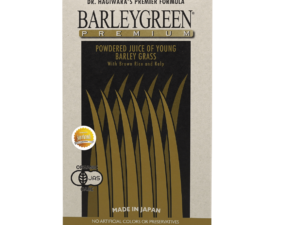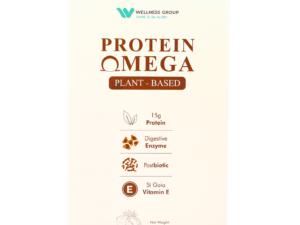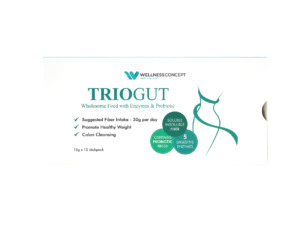Nearly 1 in 3 Malaysian adults has elevated cholesterol levels, yet many don’t realize simple dietary adjustments could transform their cardiovascular health. Emerging studies reveal a powerful connection between everyday food choices and cholesterol regulation – a discovery reshaping preventive healthcare strategies.
Wellness Group Malaysia, a trusted health resource, explores how specific nutrients interact with the body to promote wellness. Certain plant-based compounds act like natural scrub brushes in the bloodstream, supporting the body’s ability to maintain balanced lipid profiles.
This guide examines:
- Science-backed connections between nutrition and cardiovascular function
- Practical meal planning strategies using locally available ingredients
- Expert-approved methods to enhance dietary habits for long-term vitality
Research highlights the particular effectiveness of viscous plant compounds found in oats, citrus fruits, and beans. These substances form a gel-like matrix during digestion, helping the body naturally manage lipid absorption.

Click to 了解更多
Wellness Group Malaysia’s nutrition specialists are available via WhatsApp at +60123822655 (Monday-Friday 9:30 am-6:30 pm, weekends 10 am-5 pm) to help create personalized meal plans. Small dietary changes today could lead to significant heart health improvements tomorrow.
Key Takeaways
- Soluble plant compounds help manage lipid absorption naturally
- Oats, legumes, and fruits offer cardiovascular support
- Dietary adjustments require consistency for lasting results
- Combining nutrition with lifestyle changes enhances benefits
- Professional guidance ensures personalized health strategies
Understanding Fiber and Cholesterol
Many people don’t realize plant-based components work differently in our systems. Let’s explore how specific dietary elements team up with your biology to support wellness.
Types of Dietary Fiber: Soluble and Insoluble
Dietary fiber comes in two main forms. Soluble fiber dissolves in water, turning into a gel during digestion. You’ll find it in oats, apples, and lentils. Insoluble fiber stays intact, adding bulk to stool – think whole grains and carrots.
How Fiber Interacts with Cholesterol in the Body
When soluble fiber mixes with digestive fluids, it forms a sticky mesh. This gel acts like a net, capturing cholesterol particles from food. The trapped lipids then exit naturally through waste instead of entering blood circulation.
Gut bacteria play a surprising role too. They ferment soluble fiber, creating compounds that help regulate lipid production. This dual action – trapping and blocking – makes these plant components particularly effective for maintaining healthy levels.
| Type | Primary Function | Food Sources |
|---|---|---|
| Soluble | Traps cholesterol | Oatmeal, citrus fruits |
| Insoluble | Supports digestion | Brown rice, almonds |
Understanding this process helps create smarter meal plans. For those curious about digestive enzyme production, the relationship between fiber and gut health offers fascinating insights. Simple swaps like choosing barley over white rice can make a noticeable difference over time.
Does Fiber Lower Cholesterol?
Your gut bacteria play a surprising role in cholesterol regulation. Research confirms that soluble plant compounds actively support healthier lipid profiles through two key biological processes.
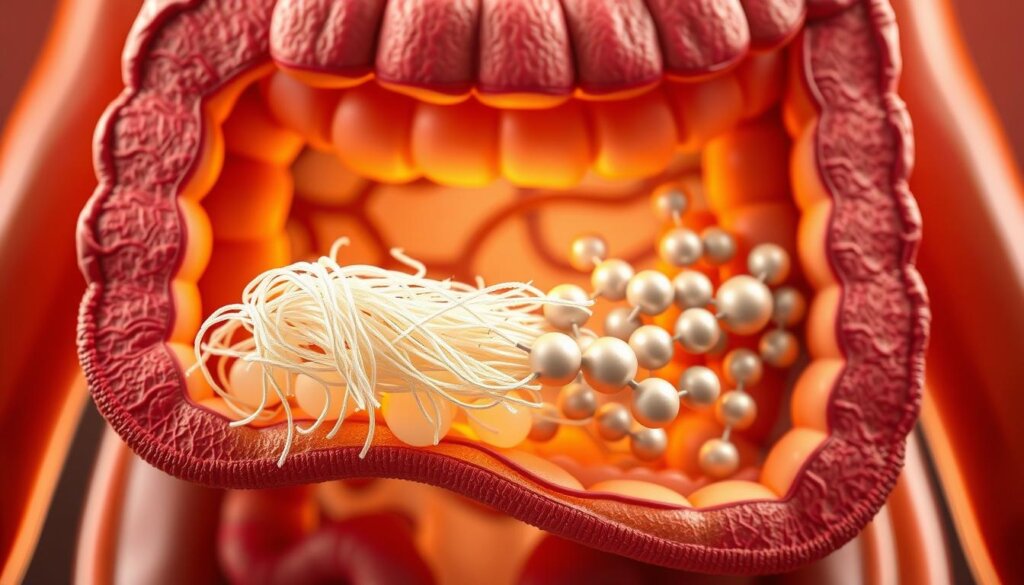
The Mechanism Behind Cholesterol Reduction
When soluble fibers reach the colon, beneficial microbes feast on them. This fermentation produces short-chain fatty acids (SCFAs) – compounds that travel through the bloodstream to the liver. Here’s how they make a difference:
- SCFAs signal the liver to reduce its natural cholesterol production
- These acids help block reabsorption of existing lipids in the intestines
The gel-like substance formed by soluble fibers acts like a sponge. It traps LDL particles from foods, ensuring they exit the body rather than enter circulation. Clinical trials show this dual action can decrease harmful lipid levels by 5-10% when maintained consistently.
Regular consumption of oats, citrus fruits, or beans keeps this process active. “The gut-liver communication system is nature’s cholesterol management tool,” notes a recent nutrition study. Pairing these foods with healthy habits creates lasting cardiovascular benefits without drastic lifestyle changes.
Key Fiber-Rich Foods for Cholesterol Management
Malaysian kitchens hold secret weapons against high cholesterol – everyday ingredients packing serious cardiovascular benefits. Three nutritional champions lead the charge in supporting healthy lipid profiles through science-backed mechanisms.
Oats, Legumes, and Apples as Top Choices
Oats reign supreme with their beta-glucan content. Just 3 grams daily – about one bowl of oatmeal – meets FDA recommendations for measurable LDL reduction. This soluble fiber forms a protective gel, trapping cholesterol particles during digestion.
Legumes like black beans deliver 6.9 grams of fiber per 100 grams. Studies show eating one cup daily for a month lowers both total and LDL levels. Chickpeas offer 6.4 grams, making hummus a smart snack choice.
Apples bring pectin to the table. Two medium fruits provide 3.7 grams of this cholesterol-trapping soluble fiber. Nutritionists recommend leaving the skin on for maximum benefit.
Incorporating Fruits, Nuts, and Seeds

Click to 了解更多
Flaxseed combines soluble fiber with omega-3s for double cardiovascular support. Try these easy additions:
- Blend chia seeds into morning smoothies
- Top yogurt with walnuts and berries
- Swap crackers for almond-stuffed dates
These foods work best when combined with personalized cholesterol management strategies. A handful of pumpkin seeds provides 5 grams of fiber while satisfying crunchy cravings. Remember – consistency matters more than perfection when building heart-healthy habits.
Integrating Fiber into Your Daily Diet
Building heart-healthy habits starts with smart meal planning. The 2020-2025 Dietary Guidelines recommend 25-28 grams daily for women and 31-34 grams for men – achievable through simple food choices. Spreading intake across meals prevents digestive discomfort while maximizing benefits.
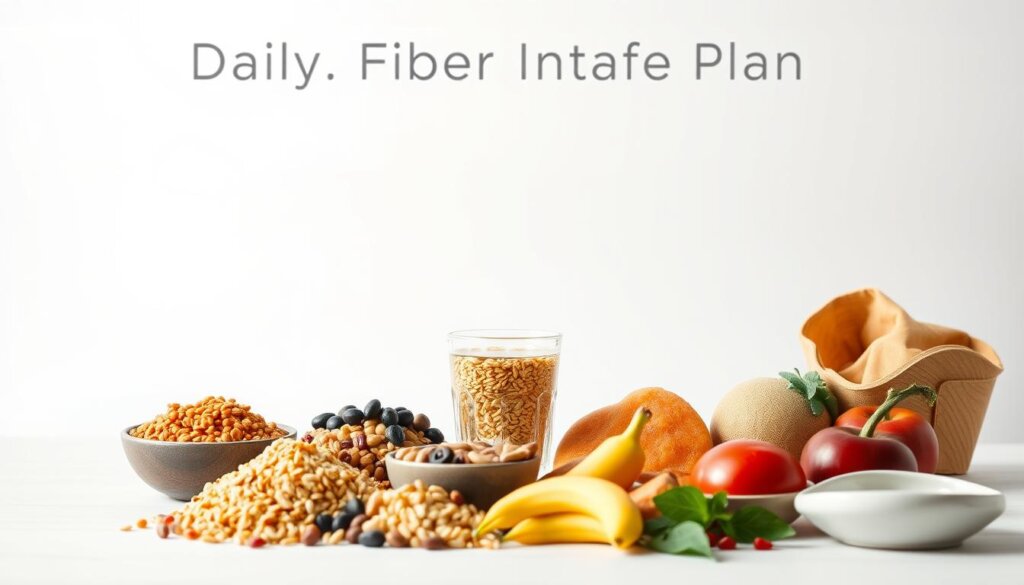
Smart Distribution for Lasting Results
Breakfast sets the tone. A bowl of oatmeal with raspberries delivers 8-10 grams – nearly a third of daily needs. Lunch could feature quinoa salad with chickpeas (7g), while dinner might include roasted vegetables with brown rice (6g). Snacks like almonds or pear slices fill remaining gaps.
| Meal | Fiber Boosters | Grams per Serving |
|---|---|---|
| Breakfast | Oatmeal + berries | 8-10g |
| Lunch | Whole grain wrap + veggies | 6-8g |
| Dinner | Lentil curry + brown rice | 9-11g |
Whole grains like barley and buckwheat serve dual purposes – they contain zero cholesterol while blocking fat absorption. For busy schedules, pre-cut vegetables and cooked legumes stored in portioned containers make fiber-rich eating effortless.
Increase intake gradually – add one high-fiber food every 3 days. Pair each meal with water to help plant compounds work effectively. Over time, these strategies become second nature, supporting both digestive health and balanced lipid levels.
Lifestyle Modifications for Healthy Cholesterol Levels
Balanced nutrition works best when paired with smart lifestyle choices. Combining smart food selections with physical activity creates a powerful defense against cardiovascular risks.
Movement Matters
Regular movement helps maintain healthy blood flow and supports metabolic efficiency. Aim for 30 minutes of moderate activity five days weekly – try cycling through local parks or swimming at community pools. These activities strengthen the heart while burning excess calories.
Strength training twice weekly builds muscle mass, which improves how the body processes lipids. Even basic bodyweight exercises like squats or push-ups make a difference. Pair this with daily walks for a well-rounded routine.
| Activity Type | Weekly Frequency | Key Benefits |
|---|---|---|
| Brisk Walking | 5 sessions | Supports circulation |
| Swimming | 2-3 sessions | Low-impact cardio |
| Cycling | 3 sessions | Boosts endurance |
| Strength Training | 2 sessions | Enhances metabolism |
Managing weight amplifies these benefits. Losing just 5-10% of body mass can significantly improve lipid profiles. Swap saturated fats from fried foods and red meat with avocado oil or olive oil for cooking.
Small changes yield big results over time. Taking stairs instead of elevators or choosing grilled fish over fried chicken helps lower cardiovascular strain. Combined with fiber-rich meals, these habits form a complete strategy for lasting wellness.
Expert Insights from Wellness Group Malaysia
Navigating dietary changes becomes easier with professional support. Wellness Group Malaysia combines scientific research with cultural understanding to create sustainable health strategies for Malaysian households.
Our nutrition specialists recognize the challenges of modifying traditional dishes like nasi lemak or roti canai. They craft meal plans using familiar ingredients enhanced with cholesterol-friendly components – think barley-infused bubur or lentil-stuffed kuih.
Personalized Support When You Need It
Connect with our team through WhatsApp at +60123822655 for:
- Customized recipes balancing local flavors and heart-healthy benefits
- Practical solutions for busy schedules and family meals
- Progress tracking through regular cholesterol level check-ins
Available Monday-Friday (9:30 am-6:30 pm) and weekends (10 am-5 pm), our experts provide real-time guidance. They help gradually increase beneficial food sources without causing digestive discomfort – a common concern when altering eating patterns.
Regular follow-ups ensure your plan evolves with your health goals. Whether managing existing concerns or preventing future issues, professional support makes maintaining balanced levels more achievable. Start with small tweaks today for lasting wellness tomorrow.
Practical Tips and Recipes to Boost Fiber Intake
Transforming everyday meals into heart-healthy powerhouses starts with creative ingredient swaps. Simple tweaks to traditional dishes can significantly increase soluble compounds that support lipid balance while keeping flavors vibrant.
Flavorful Meal Makeovers
Try overnight oats layered with mango slices and chia seeds for breakfast. This combo delivers 9g of soluble compounds per serving. At lunch, reinvent nasi lemak by substituting white rice with barley and adding black beans to the sambal.
Dinner gets an upgrade with lentil-based curries using coconut milk alternatives. These plant proteins provide 8g of beneficial compounds per cup while reducing saturated fats. For snacks, roasted chickpeas with turmeric offer crunch without compromising health goals.
Smart Kitchen Techniques
Preserve nutrients by steaming vegetables until crisp-tender. Quick-cook methods like stir-frying retain more soluble compounds than boiling. When preparing whole grains, soak them overnight to reduce cooking time and enhance digestibility.
| Ingredient | Traditional Use | Healthier Swap |
|---|---|---|
| Red meat | Rendang | Mushroom & tempeh blend |
| Full-fat dairy | Teh tarik | Almond milk latte |
| White rice | Nasi goreng | Quinoa fried “rice” |
Batch-cook steel-cut oats with cinnamon on Sundays for ready-to-go breakfasts. Store chopped veggies in airtight containers for quick weekday stir-fries. These strategies help maintain consistent intake of beneficial plant compounds that support healthy lipid levels.
Conclusion
Smart food choices create lasting protection for cardiovascular wellness. Swapping saturated fats with plant-based options like oats and lentils helps maintain balanced blood lipid levels. These adjustments work best when paired with regular activity and mindful eating patterns.
Studies show soluble compounds from legumes and citrus fruits bind to LDL particles, guiding them out naturally. This process, combined with reduced intake of processed meats, supports the liver’s ability to manage fatty acids effectively. Over weeks, such changes may significantly impact heart disease risk factors.
For sustainable results, focus on gradual improvements rather than overnight transformations. Start by adding one high-fiber ingredient daily – chia seeds in drinks or roasted chickpeas as snacks. Pair these with lean proteins and whole grains for meals that satisfy both taste and health needs.
Wellness Group Malaysia’s nutritionists stand ready to help tailor these strategies to individual lifestyles. Small, consistent steps today lay the foundation for a healthier tomorrow – proof that nourishment and prevention go hand in hand.
FAQ
How does soluble fiber help improve heart health?
Soluble fiber binds to bile acids in the digestive system, which the liver then replaces by using excess LDL particles. This process helps reduce LDL levels, supporting healthier arteries and lowering cardiovascular risks.
What are the best sources of soluble fiber for managing LDL?
Oats, barley, lentils, and apples are excellent choices. These foods contain beta-glucans and pectin, which slow digestion and promote the removal of excess fatty acids linked to high LDL.
Can increasing fiber intake replace cholesterol-lowering medications?
While a high-fiber diet supports heart health, it shouldn’t replace prescribed treatments without consulting a healthcare provider. Combining dietary changes with medical advice often yields the best results.
How much fiber should someone consume daily for optimal benefits?
Adults should aim for 25–30 grams per day, focusing on whole grains, legumes, and fruits. Gradually increasing intake helps avoid digestive discomfort while maximizing benefits like improved satiety and blood sugar control.
Are nuts and seeds effective for reducing saturated fat intake?
Yes! Almonds, chia seeds, and flaxseeds provide healthy fats and plant sterols that block cholesterol absorption. Replacing processed snacks with these options supports weight management and heart health.
Does exercise enhance the cholesterol-lowering effects of fiber?
Physical activity boosts HDL levels and improves circulation, complementing a fiber-rich diet. Pairing aerobic exercise with strength training helps maintain a healthy weight, further reducing cardiovascular risks.
What cooking methods preserve fiber content in meals?
Steaming vegetables, using whole-grain varieties, and adding raw fruits or seeds to dishes retain nutrients. Avoid overcooking legumes or grains to maintain their beneficial compounds and texture.
Can fermented foods enhance fiber’s impact on gut health?
Fermented options like yogurt or kimchi promote gut bacteria that produce short-chain fatty acids. These compounds strengthen the gut lining and may improve how the body processes LDL and triglycerides.


